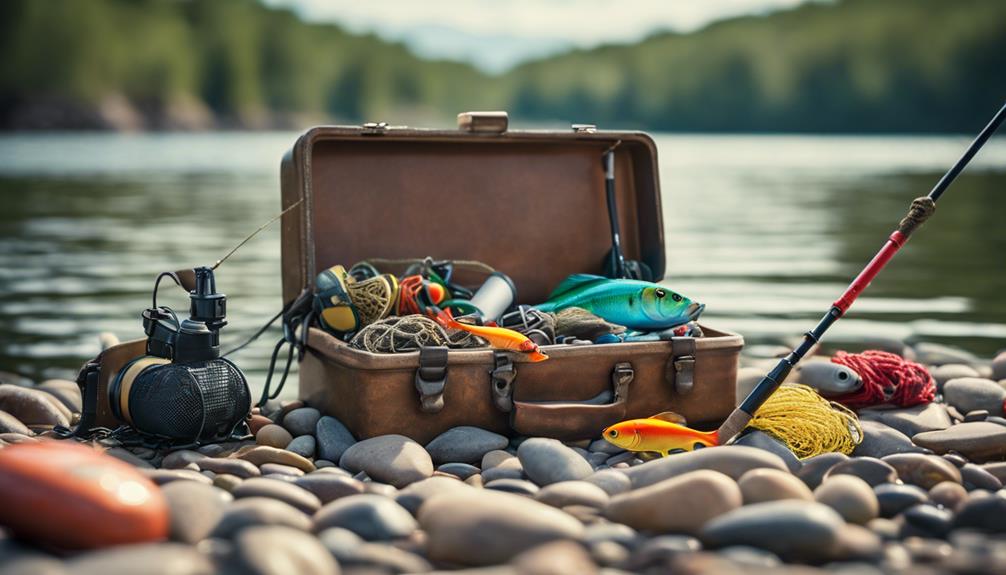Streamers fly fishing is a thrilling and effective way to catch a variety of freshwater fish. This technique involves using larger, more dynamic flies that imitate baitfish, leeches, or other aquatic creatures. In this comprehensive guide, we’ll explore the ins and outs of streamers fly fishing, covering everything from the basics to advanced techniques and gear recommendations. Whether you’re a beginner or a seasoned angler, this article will provide you with valuable insights to enhance your fishing experience.
Understanding Streamers: What Are They and How Do They Work?
Streamers are a type of fly used in fly fishing that are designed to imitate larger prey, such as minnows, leeches, or other fish. Unlike dry flies, which float on the surface, streamers are typically fished below the surface, allowing them to mimic the movement of live bait. The appeal of streamers lies in their ability to provoke predatory fish, making them an excellent choice for targeting species like trout, bass, and pike. The key to successful streamers fly fishing is understanding the behavior of the fish you’re targeting and selecting the right streamer pattern to match their feeding habits.
The Best Times and Conditions for Streamers Fly Fishing
Timing and conditions play a crucial role in the effectiveness of streamers fly fishing. Generally, streamers work best during low-light conditions such as early morning, late evening, or overcast days. Fish tend to be more active during these times, making them more likely to strike at a moving target. Additionally, streamers can be particularly effective in the spring and fall when fish are actively feeding in preparation for spawning or winter. Understanding local water conditions, such as temperature and flow rate, can also help you determine the best times to fish with streamers.
Choosing the Right Streamer Patterns for Your Target Fish
When it comes to streamers fly fishing, selecting the right streamer pattern is essential. There are countless streamer patterns available, each designed to mimic different prey species. Popular patterns include Woolly Buggers, Clouser Minnows, and Muddler Minnows. For trout, consider using patterns that imitate local baitfish, while for bass, larger and more colorful streamers can be effective. It’s crucial to have a variety of patterns in your fly box to adapt to different fishing conditions and target species. Do your research on local aquatic life to choose the most effective patterns for your fishing location.
Essential Gear for Streamers Fly Fishing
Having the right gear is vital for successful streamers fly fishing. Start with a quality fly rod that has enough backbone to handle larger streamers and the fish you’re targeting. A 6 to 8-weight rod is typically ideal for most streamer fishing situations. Pair your rod with a matching fly reel and a floating or sinking line, depending on the depth you plan to fish. Don’t forget about the importance of leaders and tippets; a strong, abrasion-resistant leader will help ensure you can land larger fish without breaking off. Finally, consider investing in polarized sunglasses to reduce glare and improve your visibility in the water.
Techniques for Effective Streamers Fly Fishing
To maximize your success with streamers fly fishing, mastering various techniques is essential. One effective method is the “strip and pause” technique, where you make short, quick strips of the line followed by pauses to mimic the erratic movement of injured prey. Another technique is “swinging,” where you cast across the current and allow the streamer to swing downstream, creating a natural presentation. Experimenting with different retrieve speeds and patterns can help you find what works best on any given day. Remember, the key to successful streamer fishing is to keep your presentation dynamic and varied.
Common Mistakes to Avoid When Streamers Fly Fishing
Even experienced anglers can fall into common traps when streamers fly fishing. One mistake is using the wrong size or type of streamer for the conditions. Always pay attention to the local forage and adjust your patterns accordingly. Another frequent error is retrieving the streamer too quickly; this can make it less enticing to fish. Instead, focus on varying your retrieve speed and technique to find what triggers a strike. Finally, ensure you maintain proper casting technique to avoid tangles and improve your accuracy. By avoiding these mistakes, you’ll increase your chances of success on the water.
Streamers Fly Fishing: The Environmental Impact and Conservation
As you enjoy streamers fly fishing, it’s crucial to consider the environmental impact of your activities. Responsible fishing practices help preserve aquatic ecosystems for future generations. Always practice catch and release when targeting species that are under threat or during spawning seasons. Additionally, be mindful of your surroundings; avoid trampling sensitive vegetation or disturbing wildlife. Participating in local conservation efforts, such as stream clean-ups or habitat restoration projects, can also contribute to the health of your fishing environment. By being a responsible angler, you can help ensure that streamers fly fishing remains a viable and enjoyable activity for years to come.
Conclusion: Mastering Streamers Fly Fishing for Success
Streamers fly fishing is an exhilarating way to connect with nature and pursue your passion for angling. By understanding the basics of streamers, selecting the right patterns and gear, and employing effective techniques, you can significantly improve your chances of landing that trophy fish. Remember to stay adaptable and open to learning, as each fishing outing provides unique lessons and experiences. With this guide in hand, you’re well on your way to mastering streamers fly fishing and enjoying countless successful days on the water. So grab your gear, hit the streams, and embrace the thrill of the chase!
